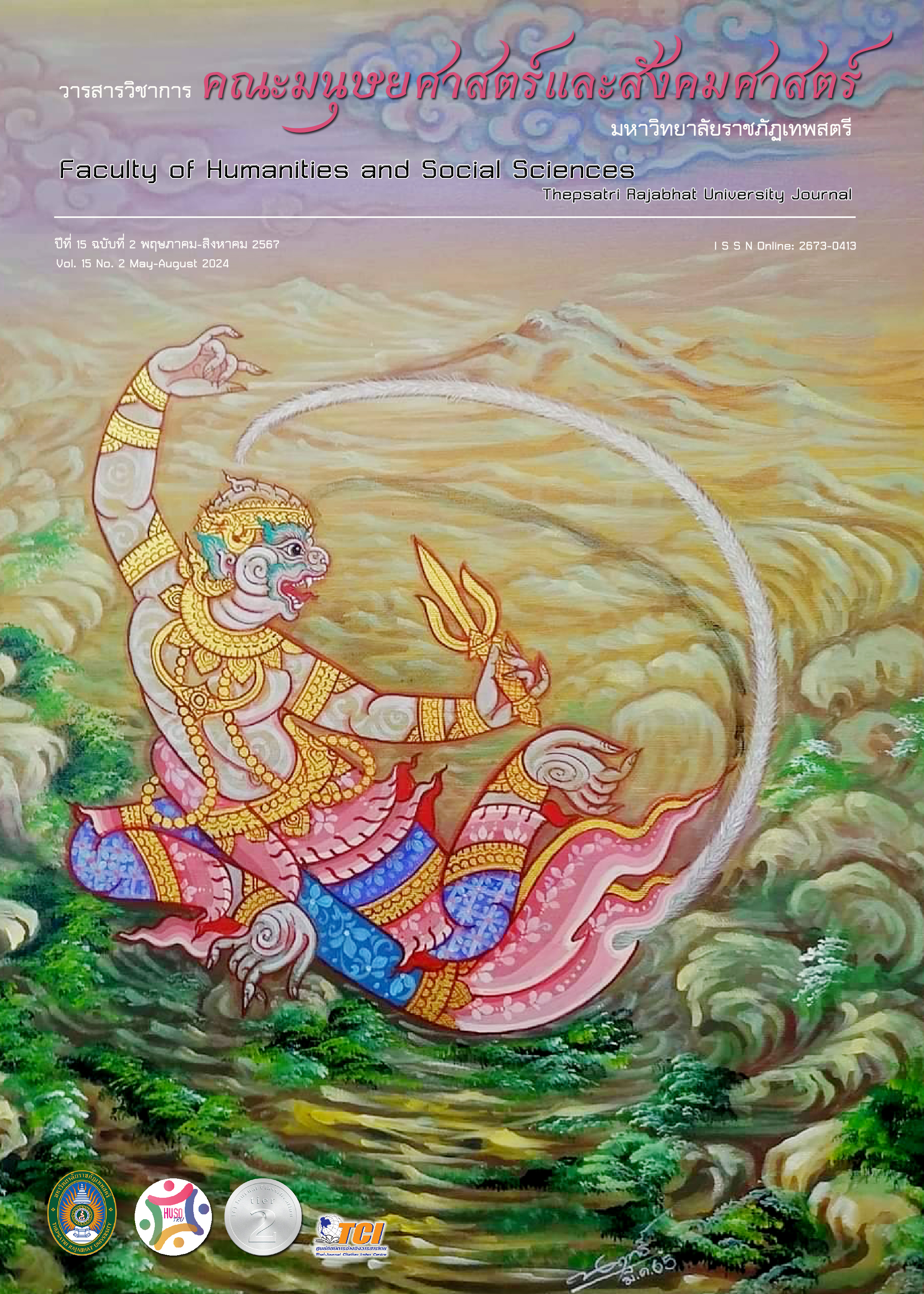Digital Marketing Communications That Affect Customer Response of Mushroom Farming Community Enterprises Nakhon Nayok Province
Main Article Content
Abstract
This research aimed to test the structural equation model of the relationship between digital marketing, brand value perception, and customer response to the products of mushroom farming community enterprises. This study employed a quantitative research approach. The population consisted of individuals who visited digital media and purchased red reishi mushroom tea products through the online channels of the mushroom farming community enterprises. The sample size was 394 respondents, selected using a convenience sampling method. The research instrument was a questionnaire, which achieved an alpha coefficient score of 0.83. Data were analyzed using descriptive statistics, including frequency distribution, percentage, mean, and standard deviation. The structural equation modeling technique was employed to test the research hypotheses. The results revealed that the model based on the research hypothesis was consistent with the empirical data. The digital marketing communication variable significantly influenced brand value perception and customer response, with influence values of 1.77 and 1.43, respectively. Additionally, the brand value perception variable had a negative influence on customer response, with an influence value of -0.32.
Downloads
Article Details

This work is licensed under a Creative Commons Attribution-NonCommercial-NoDerivatives 4.0 International License.
The content and information presented in articles published in the Academic Journal of the Faculty of Humanities and Social Sciences, Thepsatri Rajabhat University, are solely the opinions and responsibilities of the respective authors. The editorial board of the journal neither necessarily agrees with nor assumes any responsibility for such content in any manner whatsoever.
All articles, information, content, and images published in the Academic Journal of the Faculty of Humanities and Social Sciences, Thepsatri Rajabhat University, are the copyright of the journal. Any person or organization wishing to reproduce, disseminate, or otherwise utilize all or any part thereof must obtain prior permission from the Academic Journal of the Faculty of Humanities and Social Sciences, Thepsatri Rajabhat University.
References
กัลยา วานิชย์บัญชา. (2546). การใช้ SPSS for Window ในการวิเคราะห์ข้อมูล (พิมพ์ครั้งที่ 6). กรุงเทพฯ: ธรรมสาร.
กรุงเทพธุรกิจ. (2564, 8 ธันวาคม). 4 ความเปลี่ยนแปลง ยุคโควิด-19 สู่การปรับตัว Next Normal. สืบค้น มีนาคม 20, 2565, จาก https://www.bangkokbiznews.com/social/976332.
สโรชา บินสเล, และสุพัตรา คุ้มคง. (2559). รูปแบบการดำเนินธุรกิจสำหรับอีคอมเมิร์ซ. สืบค้น มีนาคม 20, 2565, จาก https://sites.google.com/site/karphanichyxilekthrxniks/raywicha-thi-sxn/raywicha-withyasastr.
Aaker, D.A. (1996). Building Strong Brands. New York: Free.
Bilgin, Y. (2018, April). The Effect of Social Media Marketing Activities on Brand Awareness, Brand Image and Brand Loyalty. Business & Management Studies: An International Journal, 6(1), 128 - 148.
Chinomona, R., & Maziriri, E. T. (2017, October). The Influence of Brand Awareness, Brand Association and Product Quality on Brand Loyalty and Repurchase Intention: A Case of Male Consumers for Cosmetic Brands in South Africa. Journal of Business and Retail Management Research, 12(1), 143 - 154.
Dewindaru, D., Syukri, A., Maryono, R. A., & Yunus, U. (2022, January). Millennial Customer Response on Social-media Marketing Effort, Brand Image, and Brand Awareness of A Conventional Bank in Indonesia. Linguistics and Culture Review, 6(S1), 397 - 412.
Hair, J., F., Black, W., C., Babin, B., J., & Anderson, R. E. (2010). Advanced Diagnostics for Multiple Regression: A Supplement to Multivariate Data Analysis. New Jersey: Prince-Hall.
Ngoma, M., & Ntale, P. D. (2019, March). Word of Mouth Communication: A Mediator of Relationship Marketing and Customer Loyalty. Cogent Business & Management, 6(1), 123 - 158.
Schiffman, L., G., & Kanuk, L. L. (1994). Consumer Behavior (5th ed.). New Jersey: Prentice-Hall.
Seo, E., J., & Park, J. W. (2018, January). A Study on the Effects of Social Media Marketing Activities on Brand Equity and Customer Response in the Airline Industry. Journal of Air Transport Management, 66, 36-41.
Yamane, T. (1967). Statistics, An Introductory Analysis (2nd Ed.). New York: Harper and Row.
Zaidi, Z., & Shukri, S. (2022, January). The Effects of Digital Marketing Implementation on Online Consumer in Selangor During COVID-19 Pandemic. Management Science Letters, 12(1), 43 - 50.
Zailskaite-Jakste, L., & Minelgaite, I. (2021, June). Consumer Engagement Behavior Perspective in Social Media: Mediating Role and Impact on Brand Equity. Journal of Eastern European and Central Asian Research (JEECAR), 8(2), 160 - 170.


